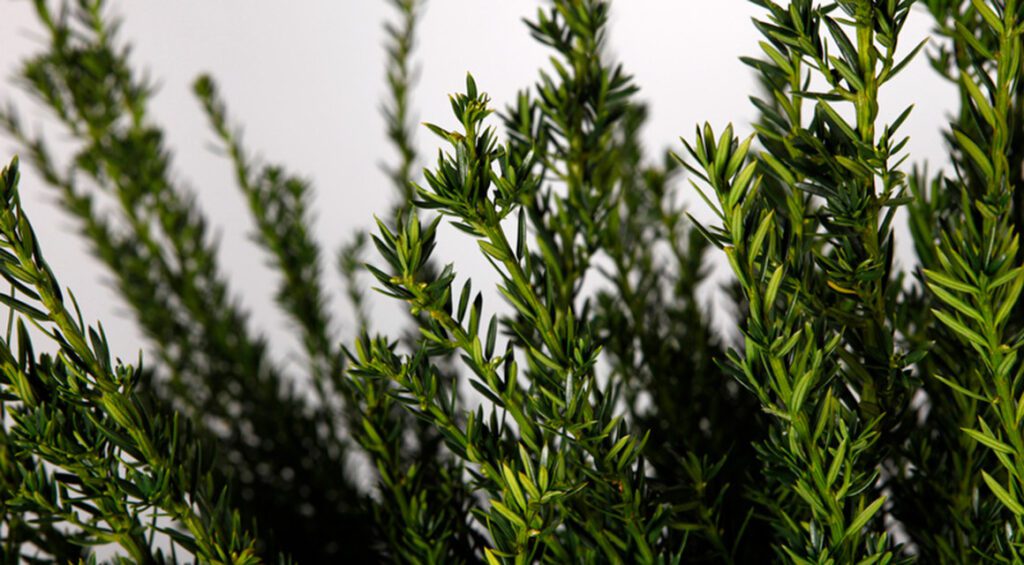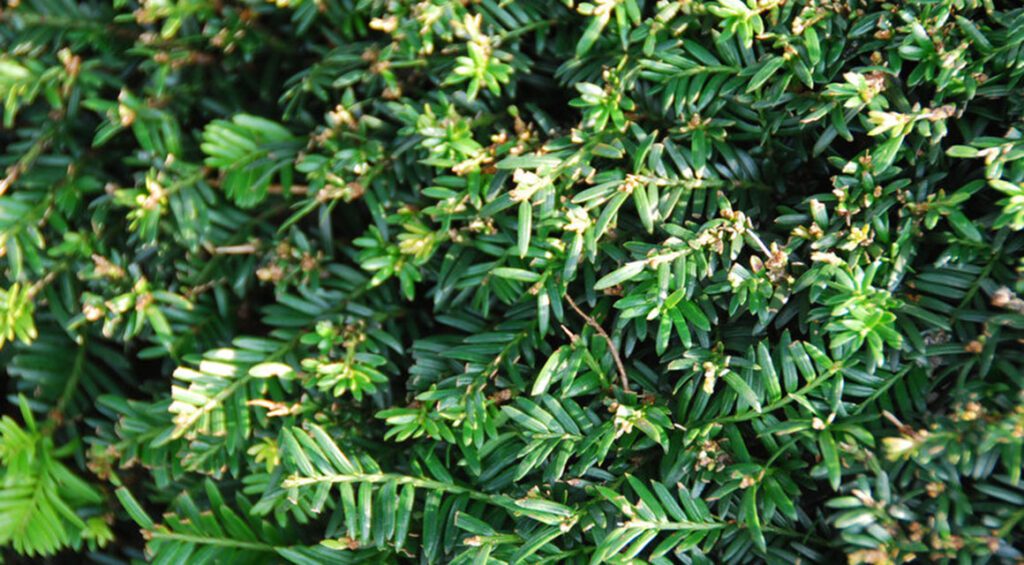Most garden owners know that yews are versatile plants that can be used for many different purposes. Yews are green all year round and are very tolerant of pruning. But what’s so special about a yew hedge? We would like to show you why yews are always an asset to your garden.
Yew trees contribute to the quality of life
Studies show: People are happier, more productive and cheerful when they are in a green environment. That’s why it’s always good to give green houseplants a place in your home. The same goes for the garden, of course. The view from the living room often looks out onto the garden. If your garden is also decorated according to your own taste, this will increase your sense of well-being. An evergreen hedge forms the frame around all the plants in your garden. Even a garden with few plants in the middle immediately takes on a serious look with a beautiful hedge.
Yew hedges make your living environment much greener. Replace a fence, wall or old hedge with a dark green yew hedge and instantly give your garden an all-natural look. It doesn’t matter if your garden is more formally decorated or a bit more casual with free growing plants: A yew hedge creates the perfect setting for all gardens. Don’t want to replace your old hedge yet, but have taken a liking to a yew? Then simply plant yews as solitary or in small groups. Let the conifer grow as a tree or shrub, which is excellent for topiary. The possibilities offered by yews are very versatile.

Contents
The different yews
The common yew or Taxus baccata is most often seen in our gardens. But there are two other species of yew in our webshop: the male yew Taxus media ‘Hillii’ and the female counterpart, the yew Taxus media ‘Hicksii’. Taxus media ‘Hillii’ does not get berries. Garden owners interested in a yew hedge without the characteristic red berries should plant this male yew. Do you want a yew in your garden precisely because of the red berries? Then there are options: Plant a common yew or combine the yew ‘Hillii’ with the yew ‘Hicksii’. In this case, plant only a few male yew ‘Hillii’ between the female plants.
Taxus media ‘Hillii’ grows a bit more compact than the common yew. The various yews are all very similar, of course, yet there are a few subtle differences. The common or European yew is best suited for narrow hedges with a formal look. In informal gardens, where there is not so much emphasis on straight lines, the other yews do very well.

Yews grow almost everywhere
Yews are very hardy hedge plants. They are very hardy and can grow very old. Yews are not very demanding in terms of location, weather conditions and soil. Yews do not tolerate waterlogging, but even wet soils do not pose a threat as long as the water drains well. Yews also grow very well in dry, nutrient-poor soil. In this case, make sure that the soil is occasionally enriched with compost or organic conifer fertilizer. In very dry periods, yews should receive additional water.
Yew trees thrive magnificently in sunny and shady locations. Do you have a space available under a tree? Plant a yew, it will grow and develop here without any problems. Yew hedges are therefore particularly suitable for locations where full sun and shade alternate during the day. With proper care, this hedge plant will thrive exceptionally well in any location. A yew is a long-term purchase. A yew hedge can decorate your garden for years or even decades.

Yews protect against air pollution
Did you know that evergreen hedges contribute to your health? A tall evergreen hedge can filter fine dust from the air. Thus, a yew hedge protects you from air pollution to a certain extent. Of course, the same is true for other evergreen conifers and for cherry laurel hedges. In addition, trees filter CO2 from the air. And we all get something out of that. A taller mature yew hedge also muffles the noise of nearby roads. The denser the hedge has grown, the greater the effect. Trim your hedge back regularly to stimulate the growth of new branches.
This will create a compact hedge with an opaque structure. Remember that yews grow slowly. Therefore, it will take a while for your hedge to reach the desired height. You do not want to wait that long? Then simply choose a ready-made hedge. Or buy hedge plants that are already a bit taller, so they will form an opaque yew hedge from the start. If you want to buy a hedge because of the air pollution in your immediate area, we recommend that you choose a ready-made yew hedge. So you will immediately have the protection you want.
Yew have a beautiful color
All evergreen hedge plants have a different shade of green. Therefore, it is important to match them exactly. Consciously choose your trees, shrubs and hedges according to the shade of the foliage and thus design the garden according to their ideas. The different shades of green create a natural atmosphere and complete your garden design. The needles of yew have a beautiful dark green color that will impress anyone who sees them in your garden. As a hedge or as a specimen, this plant is a real eye-catcher thanks to its vibrant color. For many, just the color of yew is one of the main reasons to choose this garden plant.
Another peculiarity of the yew is that it has a great attraction to birds. This is especially true of yews that bear berries: they are a vitamin-rich food source for many birds. Yew trees are therefore an extremely good fit for a bird-friendly garden design with nesting sites and food sources. Turn your garden into a paradise for birds. Place a bowl of water large enough for birds to bathe in. Or create a small pond that can serve as a water source.

